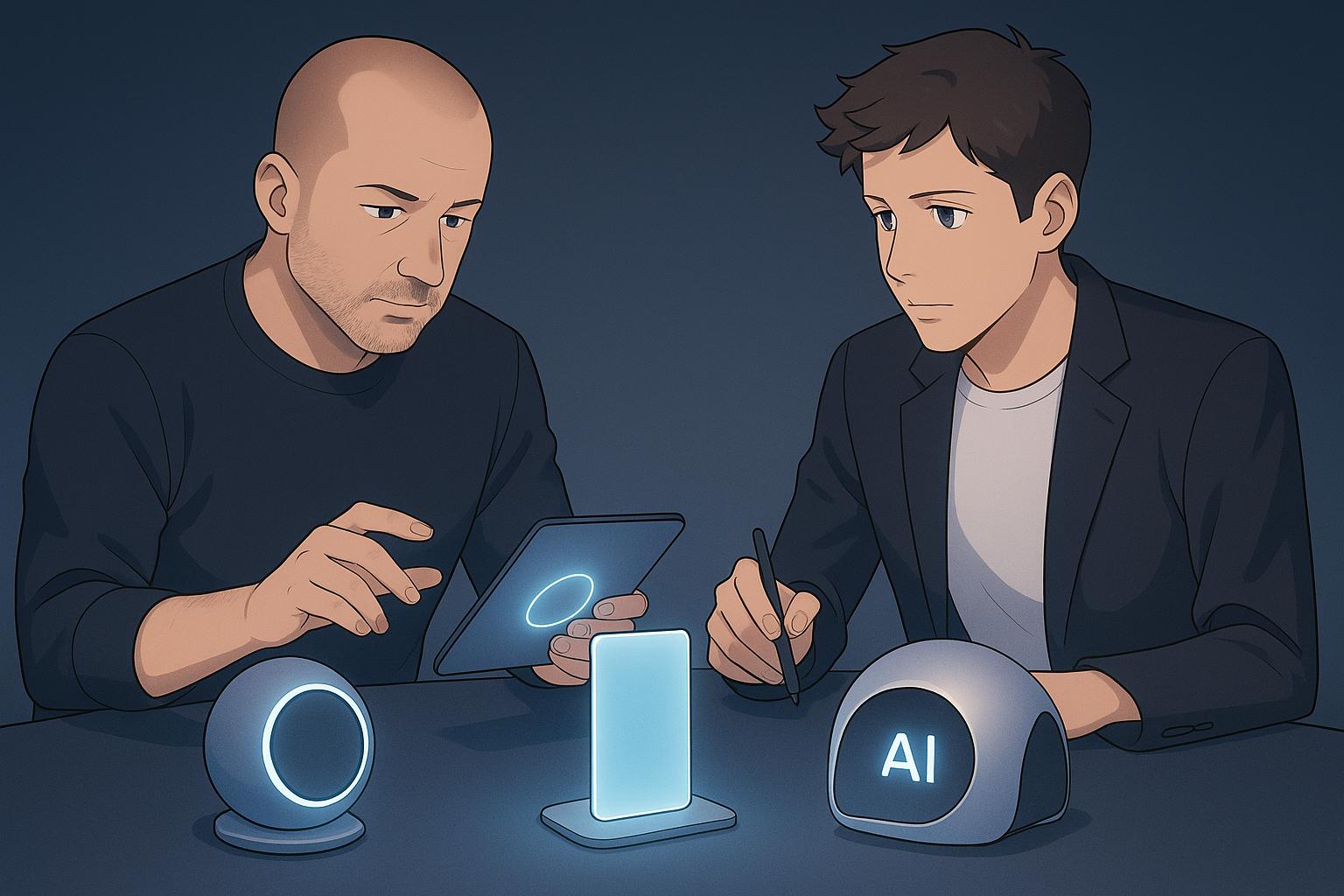Apple Inc. stands at a crossroads, navigating a landscape increasingly shaped by intensified competition and innovation challenges. The company's recent collaborations and developments, most notably the partnership between former Chief Design Officer Jony Ive and OpenAI, signal a potential shift in the tech landscape that could redefine consumer expectations and industry standards. This collaboration is raising alarms within Cupertino, marking a profound departure from Apple's traditionally tight-knit design ethos.
Ive, the visionary designer behind iconic products such as the iPhone and MacBook, has reportedly joined forces with OpenAI's CEO, Sam Altman, with the acquisition of Ive's design company, LoveFrom, valued at approximately $6.5 billion. This move is notable not only for its financial implications but also for its potential to innovate hardware design in the arena of artificial intelligence. OpenAI aims to integrate advanced AI capabilities into consumer devices, a field historically dominated by Apple, and this partnership paves the way for forthcoming devices that could challenge the iPhone's supremacy.
Despite Apple's significant achievements, including a user base exceeding 2 billion iPhones, the company has faced criticism for its slowed innovation pace. The last significant overhaul of the iPhone was in 2020, with subsequent iterations described as more evolutionary than revolutionary. This stagnation is further underscored by the firm’s struggles in the AI sector, where rivals like Google and Microsoft have garnered attention for their robust generative AI tools and applications, leaving Apple on the periphery. Speculation suggests that this lack of momentum may stem in part from challenges facing Apple’s AI leadership and an ongoing exodus of engineering talent.
The ramifications of Ive's new role extend beyond immediate product developments. Apple's anticipated push into augmented reality, with smart glasses slated for release next year, finds itself under heightened scrutiny, particularly in light of this new competition. With OpenAI's strategic entry into AI-driven hardware, the stakes are higher than ever. Apple must tread delicately as it strives to balance the legacy of its innovative past with present demands for cutting-edge technology.
Moreover, recent allegations of misleading advertising related to Apple's AI features have compounded the company's troubles. The legal challenges could undermine consumer confidence at a time when Apple needs to boost its AI credibility. Critics are questioning the authenticity of Apple's AI capabilities, particularly its reliance on older tools like Siri, which are lagging behind in a marketplace rapidly evolving towards more sophisticated applications.
Furthermore, industry events such as the recent Google I/O have highlighted the disparities between Apple and its competitors in AI innovation. Google showcased practical applications of AI that directly enhance user experiences, a stark contrast to Apple’s more limited offerings. In this context, Apple’s upcoming Worldwide Developers Conference (WWDC) on June 9 carries added weight as stakeholders await updates on the company’s AI strategy.
As the tech giant prepares for this pivotal conference, the integration of Ive’s experience with OpenAI marks a potential turning point—not only for OpenAI but for the entire consumer technology sector. It positions the firm as a serious contender that could reshape market dynamics in this new age of intelligent devices. While Apple grapples with internal and external pressures, the emergence of OpenAI as a significant player in hardware design could define the next chapter in the competition for tech supremacy.
Reference Map:
- Paragraph 1 – [1], [4]
- Paragraph 2 – [1], [2], [5]
- Paragraph 3 – [3], [6]
- Paragraph 4 – [7]
- Paragraph 5 – [4]
Source: Noah Wire Services
